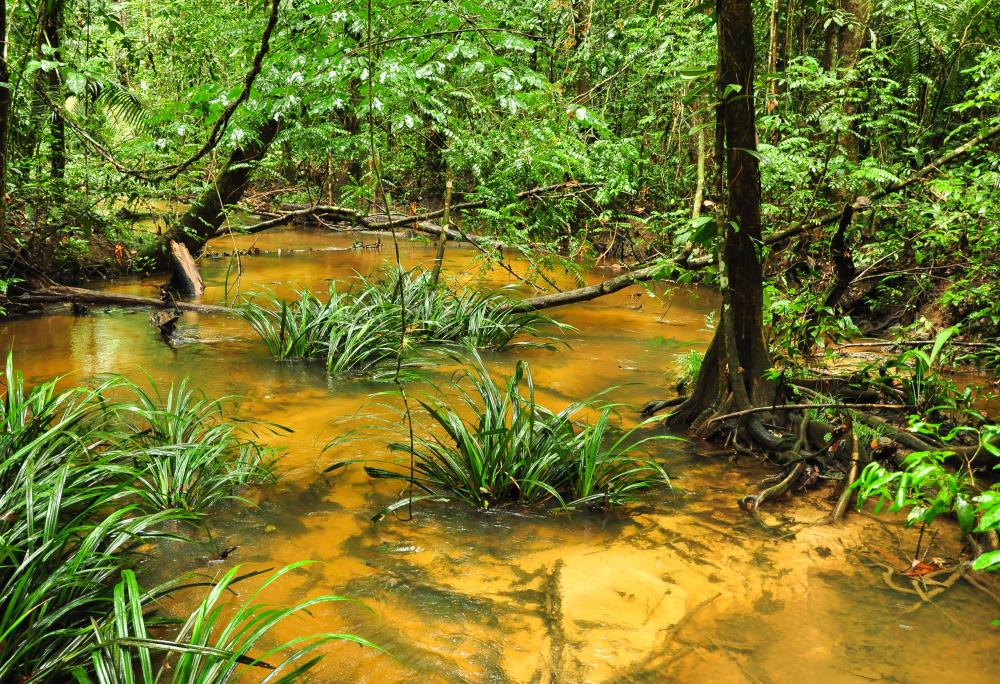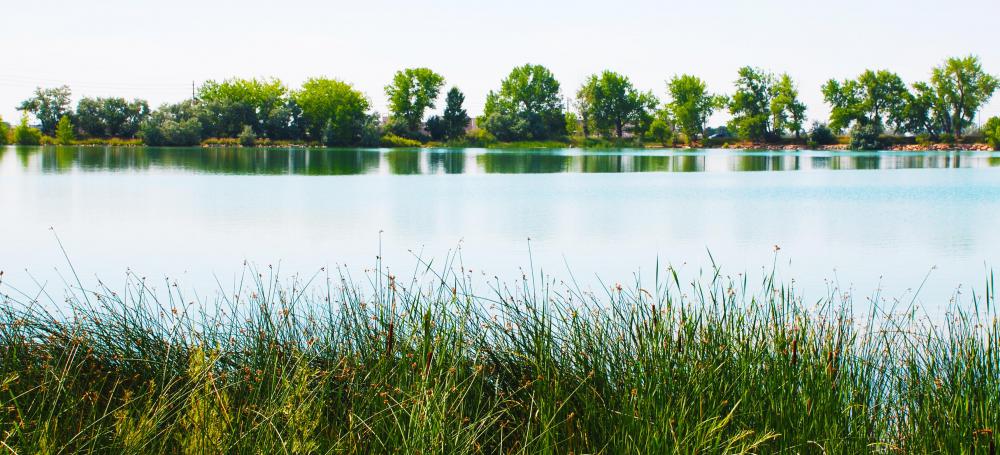What Are the Different Types of Wetland Soils?
Wetland soils are hydric soils, meaning they are constantly saturated. There are two main types of wetland soil, mineral and organic. These soils are defined by their percentage of organic matter. Bogs, swamps, marshes and fens are all examples of types of wetlands.
The wetland environment is characterized as an area of land that is usually saturated or flooded with water. These conditions create a unique landscape and ecosystem with plants and animals only found in these environments. Wetlands may occur near lakes or shorelines, in river basins, or in floodplains. They may develop in any low laying areas where either rainwater or groundwater collects over time.

One of the most essential criteria for identifying an area as wetlands is the presence of hydric soil. Hydric soils are saturated or flooded for a long enough period that an aerobic, or oxygen-less, environment is created. These conditions typically occur when dead and decaying plant matter inundate a saturated or flooded area, preventing soil oxygenation. There are two types of hydric soils: mineral soils and organic soils.

Mineral wetland soils contain less than 20% organic matter. An example of a type of mineral soil wetland is a marsh. Marshes, also called tidal marshes, may be found at river mouths or on the shores of various bodies of water, and are typically surrounded by grasses. Swamps are another type of mineral soil wetland that are located in low lying areas. Swamps have many of the same characteristics as marshes, but the soil is more stable and able to sustain the growth of larger plants such as trees.

Organic wetland soils differ from mineral wetland soils because they contain over 20% organic matter. This type of soil is called peat, and organic soil wetlands are also known as peat lands. Peat soil is generated when layers of dead or decaying plant matter exist for thousands of years in a saturated, aerobic environment.
All peat wetland soils are characterized by spongy, wet soils. Bogs and fens are the two major types of organic soil wetlands. Low shrubs and mosses characterize bogs, while grasses and reeds grow in fens. Bogs and fens are most distinctively different in that bogs receive all their moisture from rainwater, while fens obtain water form groundwater as well as rainwater.

Swamps, bogs, fens, and other wetland areas are essential to the balance of earth’s ecosystems. Wetlands help to control floods and prevent coastline erosion. They also act as carbon sinks that help to control global warming. Wetlands provide humans with many types of fish and shellfish that are used for food. Despite these benefits, wetlands are often threatened by development and pollution.
AS FEATURED ON:
AS FEATURED ON:















Discussion Comments
@talentryto- I think that a vital part of earth conservation is getting litter out of the environment. I live in an area where there is a lot of river basin wetland soil, and it gets very littered with trash every winter. In the spring, I work with a group of volunteers to clean up the area. It's a great feeling to know you are doing your part to preserved these soils.
My nephew took a college class in conservation, and learned about the differences of these types of wetland soils. It gave him insight about how wetlands are connected to everyday life for all people, and how important it is to protect the environment.
Post your comments